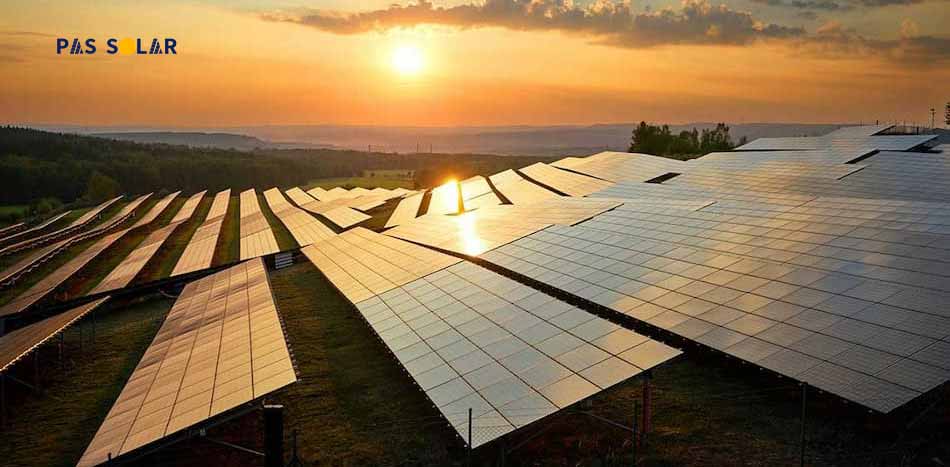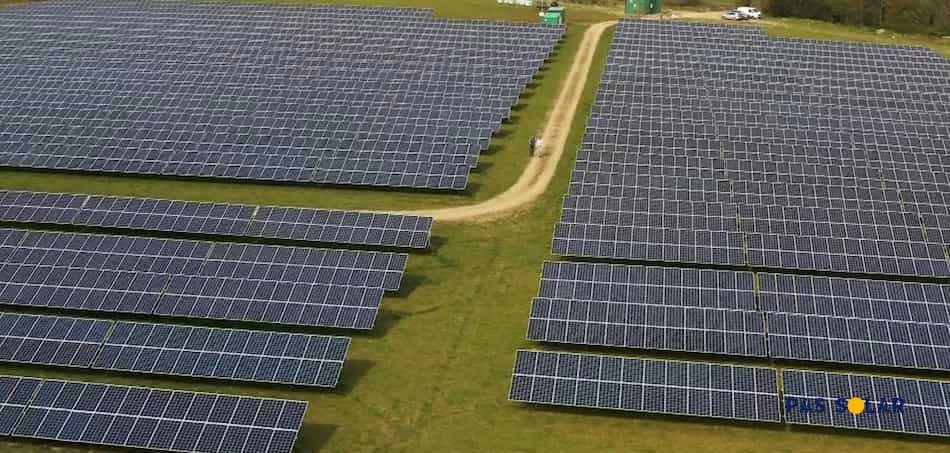Solar power is grabbing the attention of farmers and landowners across the country, and having a solar farm is becoming a very profitable investment.
After all, solar power is being known as the new hot investment option, offering yields far superior to traditional crops like corn or soybeans.
So, if you own lots of lands, should you look into collecting solar power on your property? And if so, how should one start? We’ll tell you what exactly constitutes a solar farm, how much they cost, and how you’d start one.
What is a solar farm?
Solar farms are large-scale, ground-mounted solar installations. They use photovoltaic (PV) panels or other means of collecting solar energy, such as concentrating solar systems, to harness the power of the sun.
Solar farms are also known as “solar parks”, “solar plants” and “solar power stations” and are built by certified solar farm companies. They function as power plants, just like the fossil fuel power plants that have generated electricity for consumers for the past century.
They differ from rooftop solar systems and commercial solar power systems in several ways. Solar farms take advantage of their large scale, which means that by placing large orders for solar panel in dubai and other equipment, project developers can purchase the equipment for less.
Solar power stations can also be located in a more ideal location that is free from issues like shading from trees. Solar farms are decentralized and generally consist of ground-mounted solar panels, installed over large areas.
In most cases, solar farms provide power to the electric grid and are part of the utility’s power mix. There are also different types of large solar projects, such as community solar farms and large-scale solar farms.
Solar Farms Types: Community Solar vs Utility Solar
The biggest difference between utility-scale solar farms and community solar farms is scale: utility-scale solar farms tend to be much larger than community solar farms.
Large-scale solar parks can have a capacity between 1 MW and 2,000 MW. On the other hand, community solar farms are typically less than 5 MW in size, and it’s not uncommon to find some less than 100 kW.
Another key difference between the two types of solar farms is how they provide their power.
Community solar farm projects serve subscribers or members who have paid for a portion of their energy. Utility solar farms, on the other hand, serve the utility company and all of its customers as part of the power mix that it carries on its power lines.
How much does a solar farm cost?
Solar farm installation costs typically range from $0.89 to $1.01 per watt. That means a 1 megawatt (MW) solar farm would cost between $890,000 and $1.01 million. It is also assumed you already have the land to build the solar panel farm.
Solar farms are a lot cheaper to construct and manage than residential solar systems. The statistics show that residential solar panel systems, which are typically under 20 kW, cost $3.06 per watt.
In other words, the cost per watt of a solar farm is well under a third of the cost of installing residential solar.
The low solar farm cost is also why utility companies are increasingly using solar farms when adding new power generation capacity. Solar power is not only one of the cheapest sources of renewable energy, but it is also now competing with fossil fuel power sources too!
How to start a solar farm: Key Points to Consider
Before starting a solar farm, you need to consider the solar farm’s pros and cons. These are the main questions asked by those interested in starting a solar farm on their property:
1. How much land is needed for a solar farm?
With all the equipment and spacing between rows of panels, a 1 MW solar farm typically needs 6 to 8 acres, according to GTM Research.
Keep in mind that with large solar projects, you don’t just need space for the solar panels. The land is also required to house related equipment such as inverters, and space must be left between rows of solar panels for repair and maintenance access. Apart from lots of lands, to start a solar farm you’d also need a solar structure to buy.
2. How much time is needed to build a solar farm?
Depending on the size of the solar project and the number of people working on it, the construction of a solar farm can be completed in a matter of months.
However, locating and obtaining the permits is much more complicated. It can take 3-5 years to get all the necessary approvals and contracts for a solar farm.
Once a solar farm is complete and online, it requires little maintenance and doesn’t need to be serviced more than 3-4 times a year.
3. How much money can you earn from a solar farm?
In terms of solar farm income per acre, you can earn around $40,000 per year selling electricity from a 1 MW solar farm.
Here’s an explanation of how a solar farm earns you an income.
Large-scale solar farms sell their energy by entering into power purchase agreements for their generation on the wholesale electricity market.
Based on the national average of four peak hours of sunshine per day, we know that the average 1 MW solar farm would produce 1,460 MWh per year. That means the average 1 MW solar farm can expect annual revenue of about $43,500
These, of course, are just average figures. Your actual solar farm income per acre can vary significantly based on factors such as solar energy production in your area and the current rate of solar generation in the wholesale market.
Now you know what a solar farm is and how it operates, but if you still have any doubts or questions about solar farms, be sure to call our solar equipment shop and get your answers.





